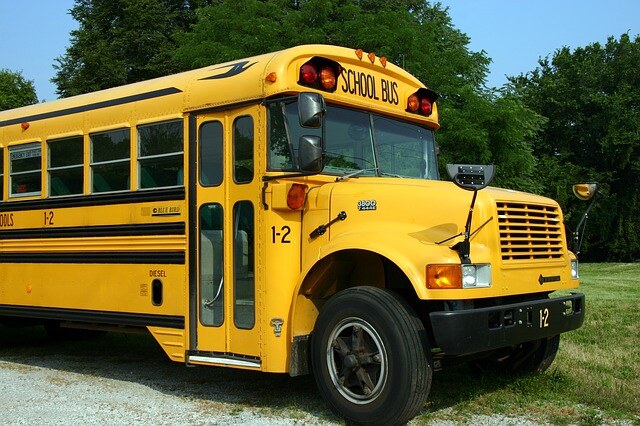How to Sanitize Your School Buses for the New School Year

As kids prepare to return to school for the new academic year, it’s important for school buses to be cleaned and sanitized to help prevent the spread of the coronavirus.
When preparing your fleet, the Centers for Disease Control and Prevention (CDC) encourages operations to distinguish between cleaning, disinfecting and sanitizing. The CDC states:
- Cleaning removes germs, dirt and other grime from surfaces. This is typically done with soap and water.
- Disinfecting kills germs on surfaces or objects. Chemicals are usually used to kill the germs.
- Sanitizing lowers the number of germs on surfaces or objects. This can make an area safer and is usually done by cleaning and disinfecting surfaces to lower the risk of infection.
To help ensure the safety of the students, follow these tips to properly prepare your fleet of school buses for the new school year:
Determine the high-touch areas
To limit the spread of the coronavirus it’s important to identify which areas of the school bus are touched most frequently and focus on cleaning and disinfecting those areas. This can include buttons, handholds, pull cords, rails, steering wheels, door handles, shift knobs, dashboard controls and stanchions. These areas should be cleaned before and after each route, and even more often if the driver feels an area needs earlier attention.
Properly clean the floor
SchoolBusFleet.com states when starting the cleaning and disinfecting process, it’s important to begin with the floor. According to the website, the dust and contaminants on the floor can become airborne while cleaning and can land on other surfaces of the bus. By cleaning the floor first, it allows the contaminants to be removed from the other surfaces later. SchoolBusFleet.com also suggests vacuuming the floors to remove particles before they become airborne, and to avoid using mops as contaminants can build up on them and be spread to other areas.
Clean the interior
After cleaning the floors, the rest of the interior of the bus must be cleaned and disinfected. This can include dusting surfaces, wiping down and disinfecting seats, walls, doors, and other areas.
Practice two-step cleaning
To ensure the high-touch areas of the bus are safe for students to encounter, SchoolBusFleet.com suggests practicing two-step cleaning. This involves first cleaning the surfaces, and then disinfecting them.
Remove trash
Remove the trash from the bus after each route. This will help prevent the spread of germs and will help keep the bus clean.
Consider adding disinfectants to the bus
AFT.org suggests that if possible, school buses should contain additional disinfectants to protect drivers and students. This can include having disinfecting wipes on-hand for quick cleaning during a route and making hand sanitizer available to keep drivers and students healthy.
Use products correctly and safely
The CDC recommends anyone in the fleet operation who is charged with cleaning and disinfecting buses be familiar with how to safely and correctly use cleaning products and disinfectants. The bus should also be properly ventilated when using the products, and when necessary, safety gear should be worn.
